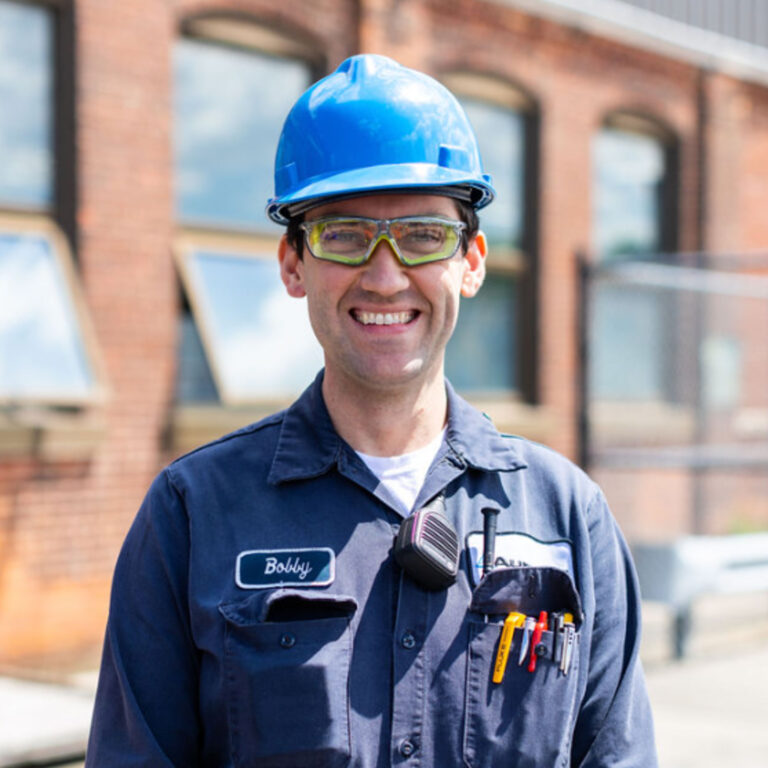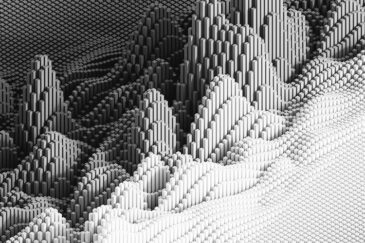Rajesh Bhaskaran’s work seeks to promote the “democratization of simulation” through effective integration of simulation tools into engineering education. He directs the Swanson Lab and has helped introduce industry-standard simulation tools into Cornell courses covering fluid mechanics, heat transfer, solid mechanics, and numerical analysis. Dr. Bhaskaran has led the development of SimCafe.org as an online portal for learning and teaching finite-element and CFD simulations. SimCafe is used worldwide in courses as well as for self-paced learning by students and industry professionals. Dr. Bhaskaran has developed a unified methodology for using simulation in disparate lecture-based and lab courses. This methodology teaches students to approach simulations like an expert rather than just pushing buttons and accepting results at face value. Dr. Bhaskaran’s professional interests include engineering applications of simulation technology, reliable deployment of advanced simulation by generalist engineers, and conceptual change in learners using simulations. He has organized two international workshops on simulation in engineering curricula.

Finite Element AnalysisCornell Certificate Program
Request More Info
Overview and Courses
When challenges arise in design, it is crucial for engineers and their teams to have the right awareness and skill set to solve complex problems like an expert. Using finite element analysis (FEA), you can predict how a part or assembly will behave under given conditions, setting you up to innovate computationally.
In this certificate program, you will build your conceptual understanding of finite element-based simulations. As you do, you will gain hands-on experience, from solving simple structural problems using Ansys Mechanical to solving practical problems that involve elasticity and plasticity with realistic geometries and loads. You will also solve applied problems using methods such as beam and shell analysis as well as modal and random vibration analysis. By the end of this certificate program, you will have the foundational skills to build reliable and valid FEA simulations for practical problem solving in your career ahead.
You’ll be most successful in this program if you have a basic knowledge of differential and integral calculus and Newton’s second law as well as some prior exposure to statistics.
We strongly recommend you use a desktop version of Ansys. If you don’t already have access to Ansys, be sure your machine meets the following hardware requirements in order to download and use the free student desktop version of Ansys:
- Supported platforms and operating systems: Microsoft Windows 10, 64-bit
- Minimum hardware requirements: Workstation class processor, 4 GB RAM, 25 GB hard drive space, Computer must have a physical C:/” drive present, professional workstation class 3-D graphics card and driver, OpenGL-capable.
If your machine does not meet these requirements, you may also use an online version of Ansys. Be sure you meet the following bandwidth requirements: 5Mbps download speed and 100 ms maximum roundtrip latency.
For the best experience in this program it is strongly recommended to take these courses in the order that they appear.
Course list
Finite element analysis (FEA) is a computational technique used to predict how a part or assembly behaves under given conditions, thus reducing the need for physical prototypes in product design while enabling the exploration of a large number of potential designs. It can be used, for example, to simulate the buckling of a wind turbine blade, the deformation of a pressure vessel, or the vibrational response of an electronics enclosure; these are all problems that can be solved computationally that would otherwise be impossible to do by hand. FEA also helps you generate clear visual representations of your solution that make interpretation by humans much easier and enable us to develop physical intuition. To ensure that your solutions accurately represent reality, however, you first need to understand how the "black box" of your modeling software functions and have methods to verify and validate your results.
In this course, you will investigate the major elements of what is inside the black box to gain a deep conceptual understanding of how FEA software produces solutions. This will help you build an intuitive understanding of the fundamental mathematical models and physics underlying simulations of static and dynamic behavior of engineering structures. You will also familiarize yourself with the numerical solution strategy employed to solve the mathematical models using the finite element method as well as how to minimize errors. Ultimately, this course will prepare you to build reliable and valid FEA simulations for practical problems using industry-standard simulation software such as Ansys.
- Mar 11, 2026
- Jun 3, 2026
- Aug 26, 2026
- Nov 18, 2026
Professor Bhaskaran's framework for solving finite element problems can be applied to an array of situations and contexts. Here, you will have the opportunity to practice applying this framework and begin creating simulations using Ansys. This course has been designed with a focus on problem-based learning: First, you will work on a "bar in extension" problem in Ansys, with Professor Bhaskaran's video demonstrations to help guide you. You will then practice solving a challenge problem on your own.
To get the most out of the experience, you should work through each phase of the problem and reach out to your peers or course facilitator when you are stuck. Once you have completed the “bar in extension” problem, you'll be ready to take on a new but similar challenge: bar under gravity force. This challenge problem will require you to apply the same concepts and techniques that you practiced in the example problem but without videos to guide you. You'll be required to answer graded questions at each stage of the process. Your final simulation will be a product of your own efforts and will give you the confidence to begin working on more complex problems in finite element analysis.
You are required to have completed the following course or have equivalent experience before taking this course:
- Conceptual Foundations of Finite Element Analysis
- Mar 25, 2026
- Jun 17, 2026
- Sep 9, 2026
- Dec 2, 2026
Professor Bhaskaran's framework for solving finite element problems can be applied to an array of situations and contexts. To practice applying this framework and create simulations using Ansys, your effort in this course will be focused on problem-based learning. You will explore the big ideas in 3D elasticity then apply them to solve an example static structural problem in Ansys. The example problem will involve analyzing a pressure vessel with a realistic geometry and loads. The geometry will be provided to you as a CAD file. As we set up and solve the simulation in Ansys, we'll keep returning to the big ideas to make sense of the Ansys inputs and outputs. You will follow along in Ansys as Professor Bhaskaran demonstrates best practices for simulating static structural applications. Your final simulation will be a product of your own efforts and will give you the confidence to create reliable static structural simulations.
You are required to have completed the following courses or have equivalent experience before taking this course:
- Conceptual Foundations of Finite Element Analysis
- Ansys Mechanical Concepts and Implementation
- Apr 8, 2026
- Jul 1, 2026
- Sep 23, 2026
- Dec 16, 2026
Professor Bhaskaran's framework for solving finite element problems can be applied to an array of situations and contexts. In order to practice applying this framework and create simulations using Ansys, your effort in this course will be focused on problem-based learning. You will examine the big ideas in beam and shell theories which are the basis for many practical static and dynamic simulations. Shell theory details are complex, but we can understand the underlying concepts as an extension of beam theory. You will apply the big ideas in shell theory to solve a practical problem in Ansys, namely a wind turbine blade with realistic geometry and loads.
Professor Bhaskaran will walk you through solving the wind turbine blade example problem in Ansys. The geometry will be provided to you as a CAD file. As you set up and solve the simulation in Ansys, you'll continue to refer back to the big ideas to make sense of the Ansys inputs and outputs. You will follow along in Ansys as Professor Bhaskaran demonstrates best practices for simulating practical shell problems. Your final simulation will be a product of your own efforts and will give you the confidence to create reliable beam and shell simulations.
You are required to have completed the following courses or have equivalent experience before taking this course:
- Conceptual Foundations of Finite Element Analysis
- Ansys Mechanical Concepts and Implementation
- Elasticity Applications
- Apr 22, 2026
- Jul 15, 2026
- Oct 7, 2026
- Dec 30, 2026
Vibration is an important consideration in many engineering applications, including compressors, turbines, gears, and bearings. Modal analysis is used to predict the natural frequencies of the structure. Knowing these frequencies, the engineer can design the structure to avoid resonance leading to catastrophic failure. You will explore the big ideas in modal analysis by extending 3D elasticity concepts then apply those big ideas to solve a practical problem in Ansys: predicting the natural frequencies and mode shapes for a turbine disk with blades.
Professor Bhaskaran will walk you through solving the “turbine disk with blades" example problem in Ansys. The geometry will be provided to you as a CAD file. As you set up and solve this vibration simulation in Ansys, you'll continue to refer back to the big ideas in modal analysis to make sense of the Ansys inputs and outputs. You will follow along in Ansys as Professor Bhaskaran demonstrates best practices for simulating vibration problems. Your final simulation will be a product of your own efforts and will give you the confidence to create reliable vibration simulations.
You are required to have completed the following courses or have equivalent experience before taking this course:
- Conceptual Foundations of Finite Element Analysis
- Ansys Mechanical Concepts and Implementation
- Elasticity Applications
- Beam and Shell Applications
- May 6, 2026
- Jul 29, 2026
- Oct 21, 2026
Request more Info by completing the form below.
How It Works
- View slide #1
- View slide #2
- View slide #3
- View slide #4
- View slide #5
- View slide #6
- View slide #7
- View slide #8
- View slide #9
Faculty Author
Key Course Takeaways
- Build your conceptual understanding of finite element-based simulations
- Solve a simple structural problem using Ansys Mechanical
- Solve practical problems that involve elasticity and plasticity with realistic geometries and loads
- Solve practical problems such as wind turbine blade buckling using beam and shell analysis
- Solve practical vibration problems (turbine blade and disk, beam, aviation electronics) using modal and random vibration analysis

Download a Brochure
Not ready to enroll but want to learn more? Download the certificate brochure to review program details.

What You'll Earn
- Finite Element Analysis Certificate from Cornell Engineering
- 70 Professional Development Hours (7 CEUs)
Watch the Video
Who Should Enroll
- Mechanical engineers
- Simulation engineers
- Civil engineers
- Aerospace engineers
- Prospective engineers
- Biomedical engineers
- Design engineers
- Undergraduate and graduate students in engineering
Explore Related Programs
Request Information Now by completing the form below.

Finite Element Analysis
| Select Payment Method | Cost |
|---|---|
| $3,900 | |























